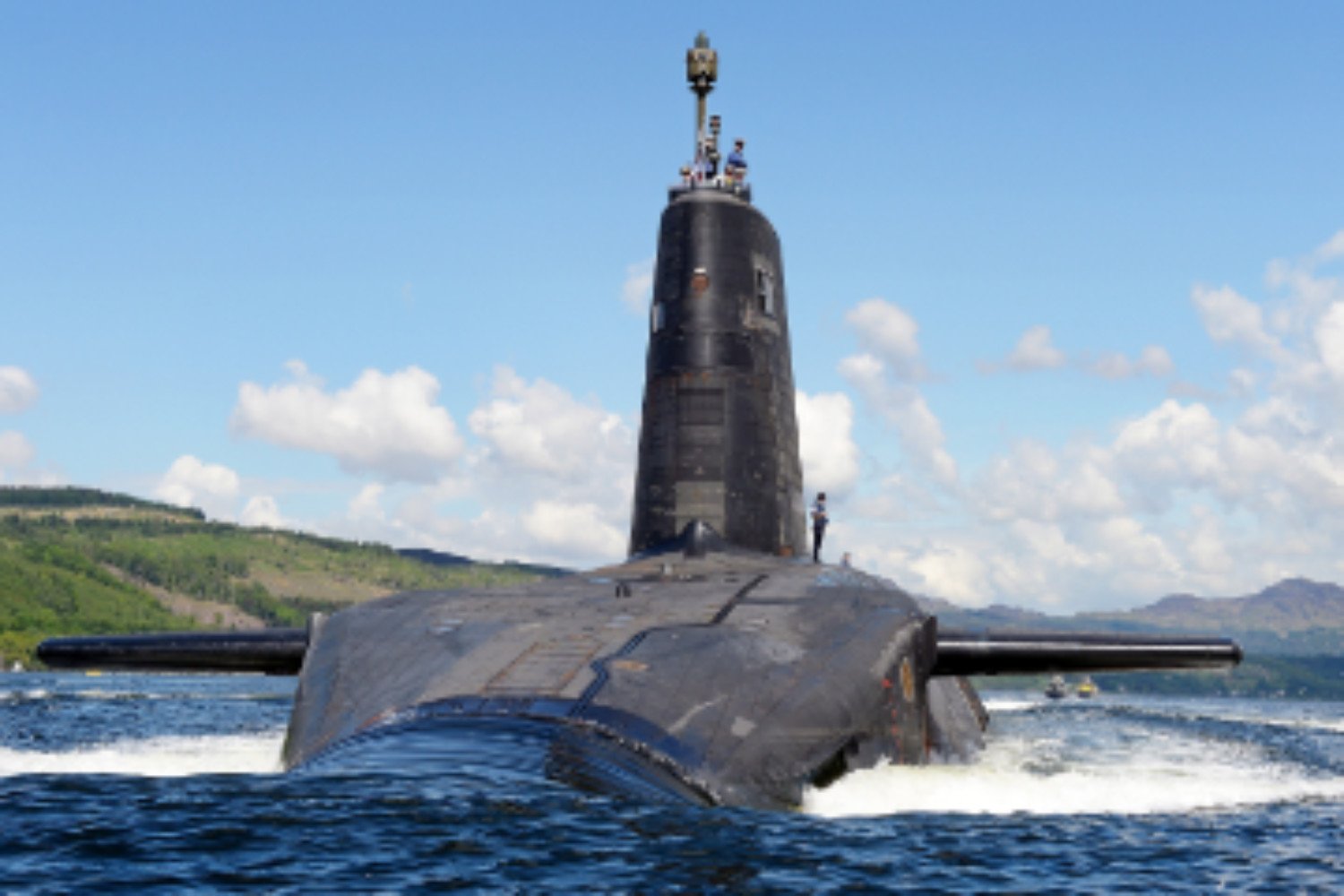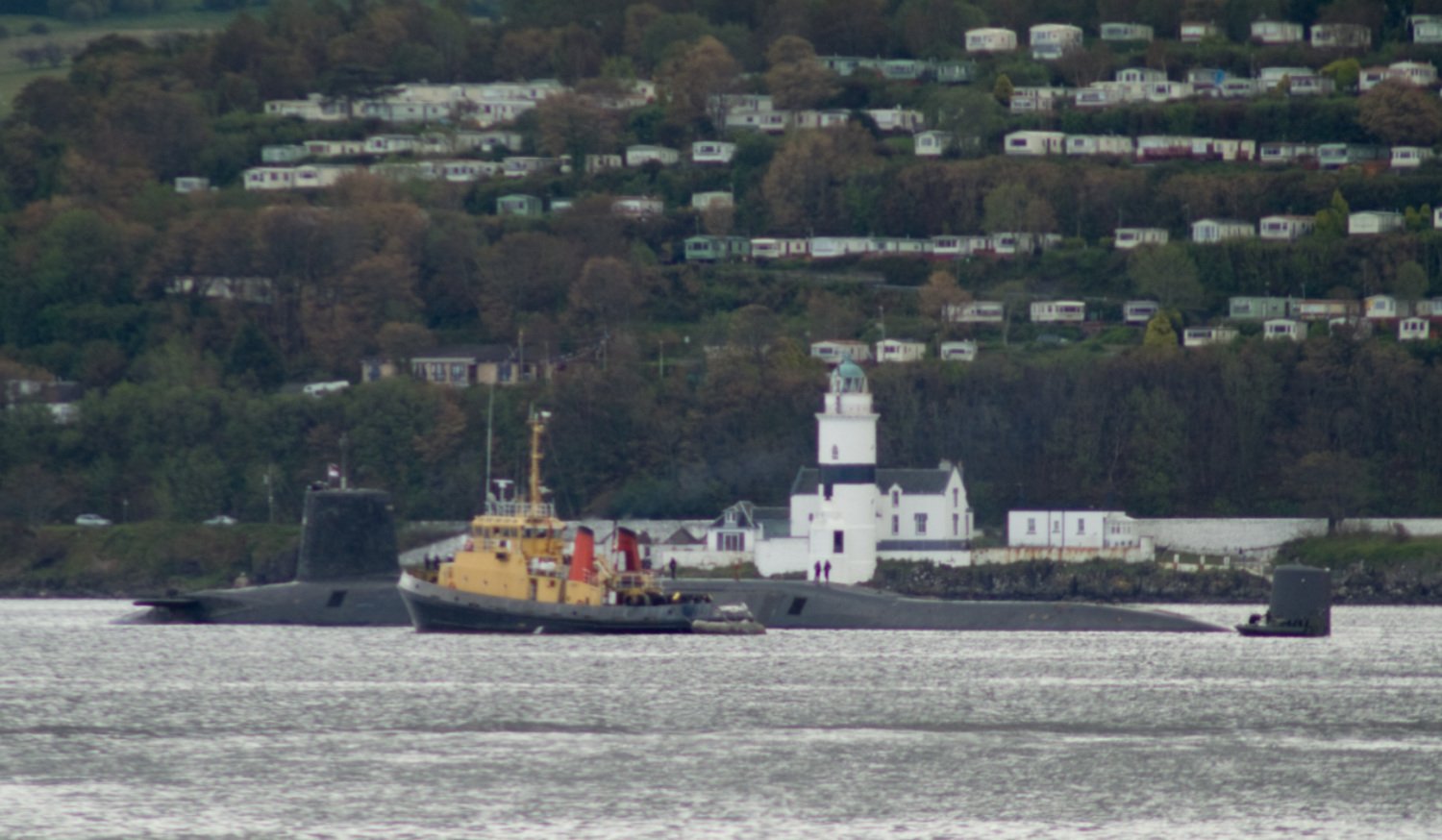
Britain’s Vanguard submarines, each armed with eight US Trident ballistic missiles with nuclear warheads, have been patrolling the seas since 1994. An issue bitterly contested in the 1980s has now, for most of us, sunk beneath our consciousness like…well, a submarine. But will it stay that way?
In the 1980s, US ground-launched cruise missiles were based at two UK sites. They were potentially mobile and could have been on our roads and in our faces, so the opposition was great. But long after the four Vanguard submarines went into operation, with their submarine-launched ballistic missiles, based at Faslane north of Glasgow, they have become just part of the defence establishment. Since 1998, Trident has been Britain’s sole nuclear weapons system. It has been out of sight and, for the most part, out of mind. Even the government announcement in 2016 that the Vanguards are to be replaced by Dreadnought submarines, due to be operational by 2028, raised scarcely an eyebrow, and neither did the announcement this February that the current nuclear warheads are to be replaced.
Consciousness is, after all, rather less vigilant than the RAF Fylingdales’ radar early-warning system in Yorkshire, which scans the heavens for incoming missiles. Most of us are glad to leave defence matters to others and focus our energies on other threats – of which there are plenty just now – which appear on our horizons. But changes are in the air.
When challenges loom in the near future, we develop plans, but beyond that, all is speculation. However, the future is now pressing itself upon us like clouds overhead. After Brexit is completed, will Scotland vote to leave the union? If it does so, the rump UK would want to retain sovereign control of the base at Faslane. It seems unlikely that the government of an independent Scotland would accept that, nor accept a lease like that by the US of Guantanamo Bay in Cuba. Indeed, the Scottish National Party, which is opposed to nuclear weapons, has made clear that it would reject any such proposal.
So where would Trident find a haven? It will need a deep-water stretch of coast some distance from any city. The Channel is much too busy to add the risk of nuclear submarines, and the North Sea, too, is one of the world’s most important shipping routes. Omitting Northern Ireland – also a candidate to secede from the union – that leaves the coast from Devon and Cornwall to Cumbria from which Trident submarines could slip out into the Atlantic. A small number of sites in Devon and Cornwall have been explored as potential alternatives to Faslane, though none were considered suitable, mostly being too close to centres of population.

This is not something any government would want to discuss, and probably most MPs and peers at Westminster have not given it a thought. But we in the South West should, because it’s a possible sequel to Brexit. Would we want the coming new generation of nuclear submarines to be based here? Do we as taxpayers want to contribute to the 35 per cent of MOD capital expenditure that is budgeted for the new Trident fleet in the early 2020s? Or would a battered South West economy have a preference for the high-value jobs it would create, considering them sufficient to override the risks? Trick or treat.
At any one time at least one of the submarines is on patrol, so up to three may be in port for maintenance, crew leave, etc. United States submarine commanders are prevented from launching missiles until a code has been sent by the chiefs of staff. Equivalent devices are not installed on British Vanguard submarines, on the grounds that the chain of command might be destroyed before a launch order could be sent.Because communications, command, control and intelligence systems are vulnerable to attack, each submarine commanding officer has handwritten sealed orders from the Prime Minister, to be opened only in the event of a crisis, and specifying what action to take in the event that an enemy nuclear strike has destroyed the British government. The insecurity in the chain of command makes nuclear submarines deployed at sea sources of potential risk, and that, in turn, means that an enemy nuclear power would probably target a nuclear submarine base early in a conflict, before those submarines not on patrol could slip out to sea.
A report by the Royal Institute of International Affairs published in 2014 warned: “In the last few years, there is evidence that the perceived nuclear risk calculation is shifting upwards again”. It added, “Poor practices in nuclear weapons management have occurred at all levels of decision-making in the past, are still happening today and are likely to continue in the future”.
We are in the land not of the blind, but of those choosing not to see. But if we do peer into the future, we can see through the mists of speculation some rather nasty risks set in train by Brexit. The South West should focus its vision.




